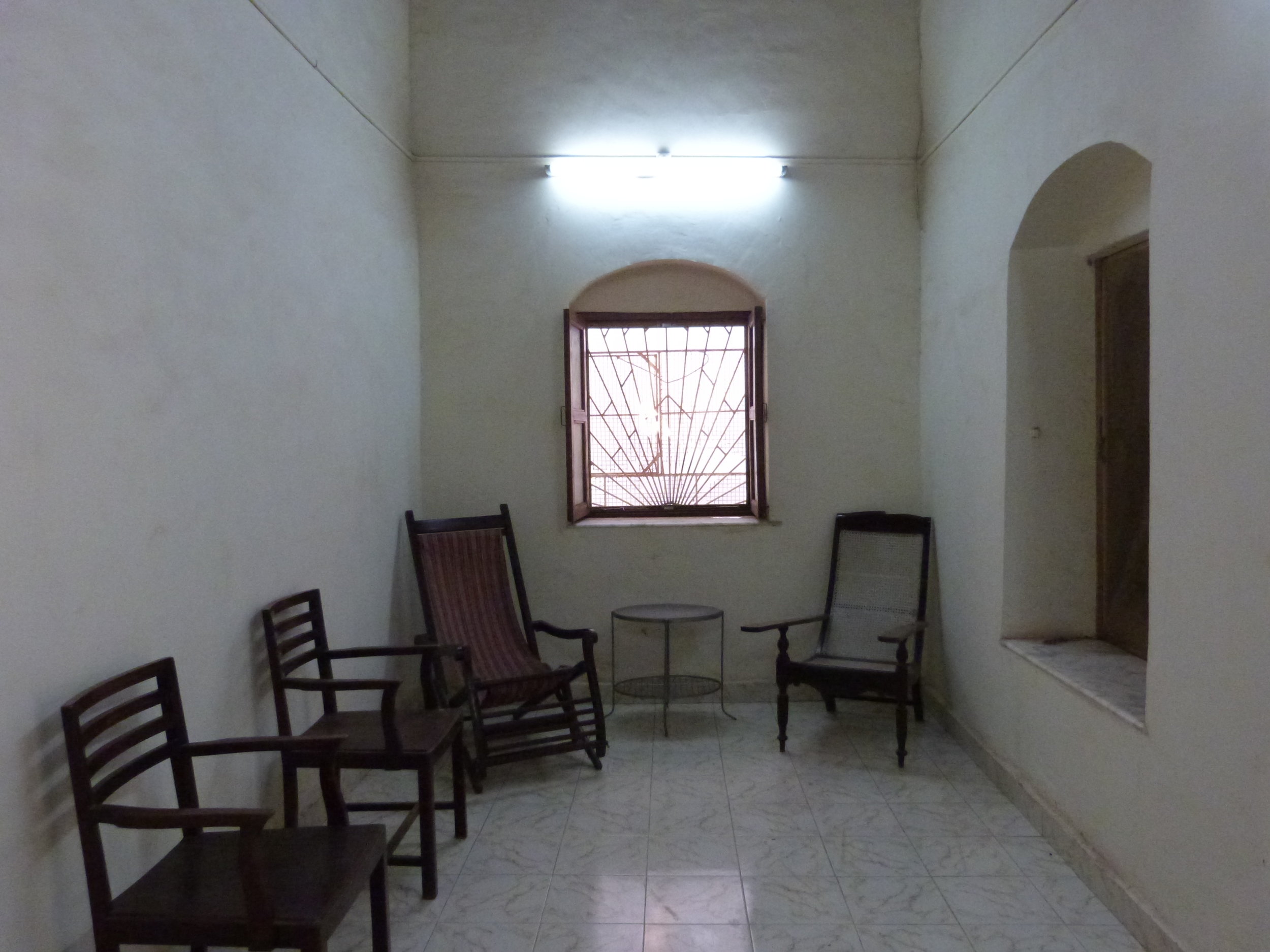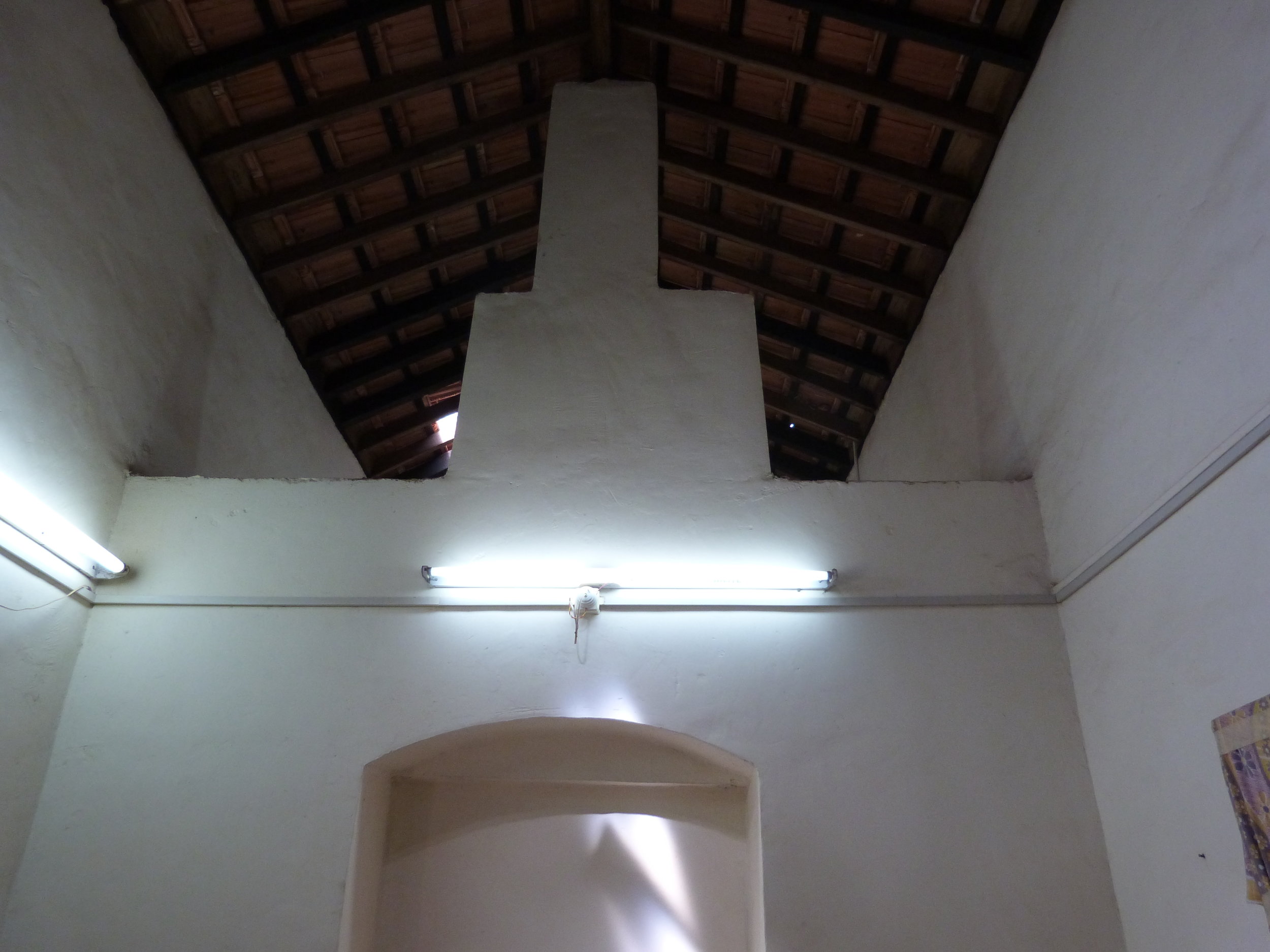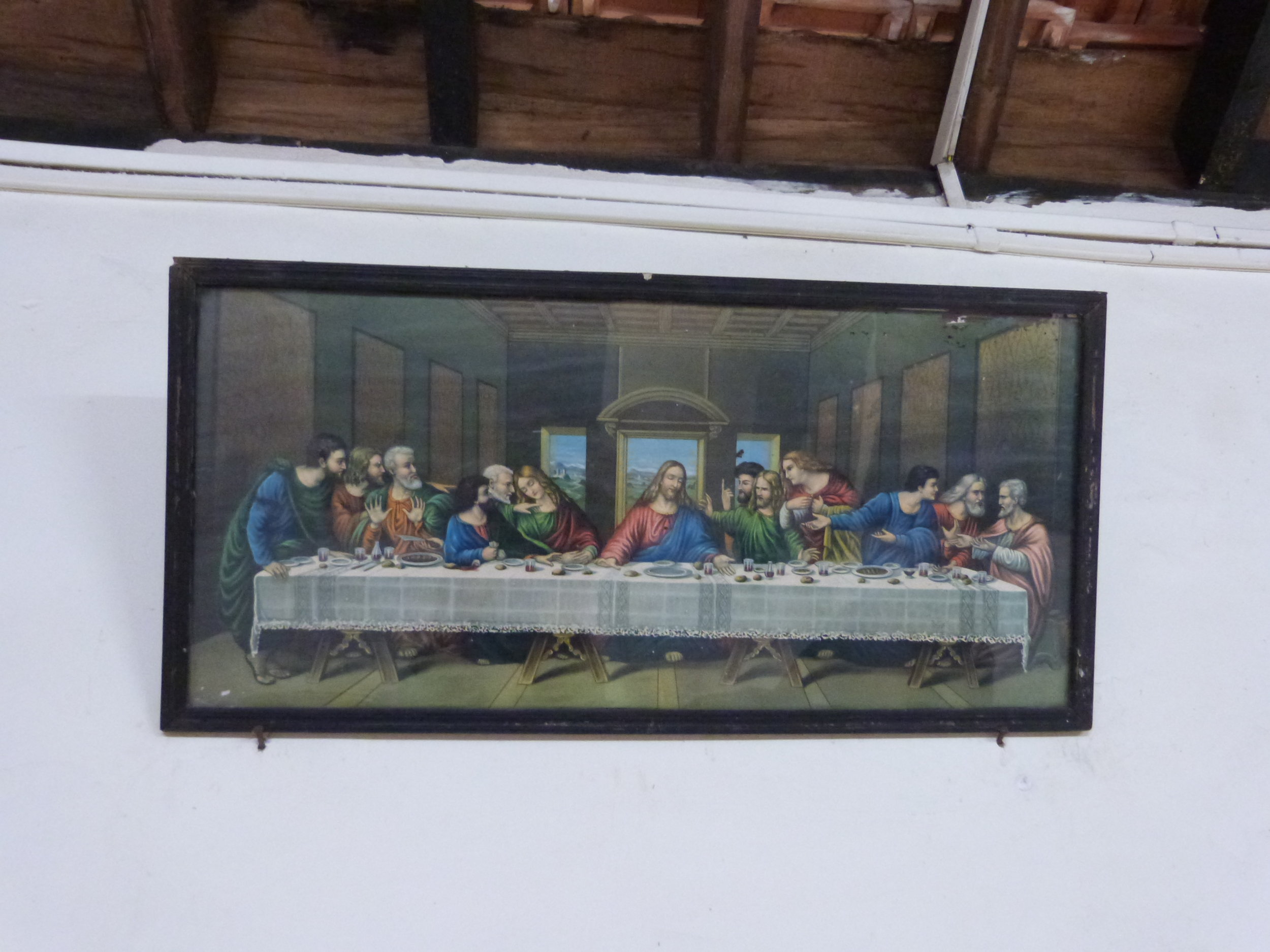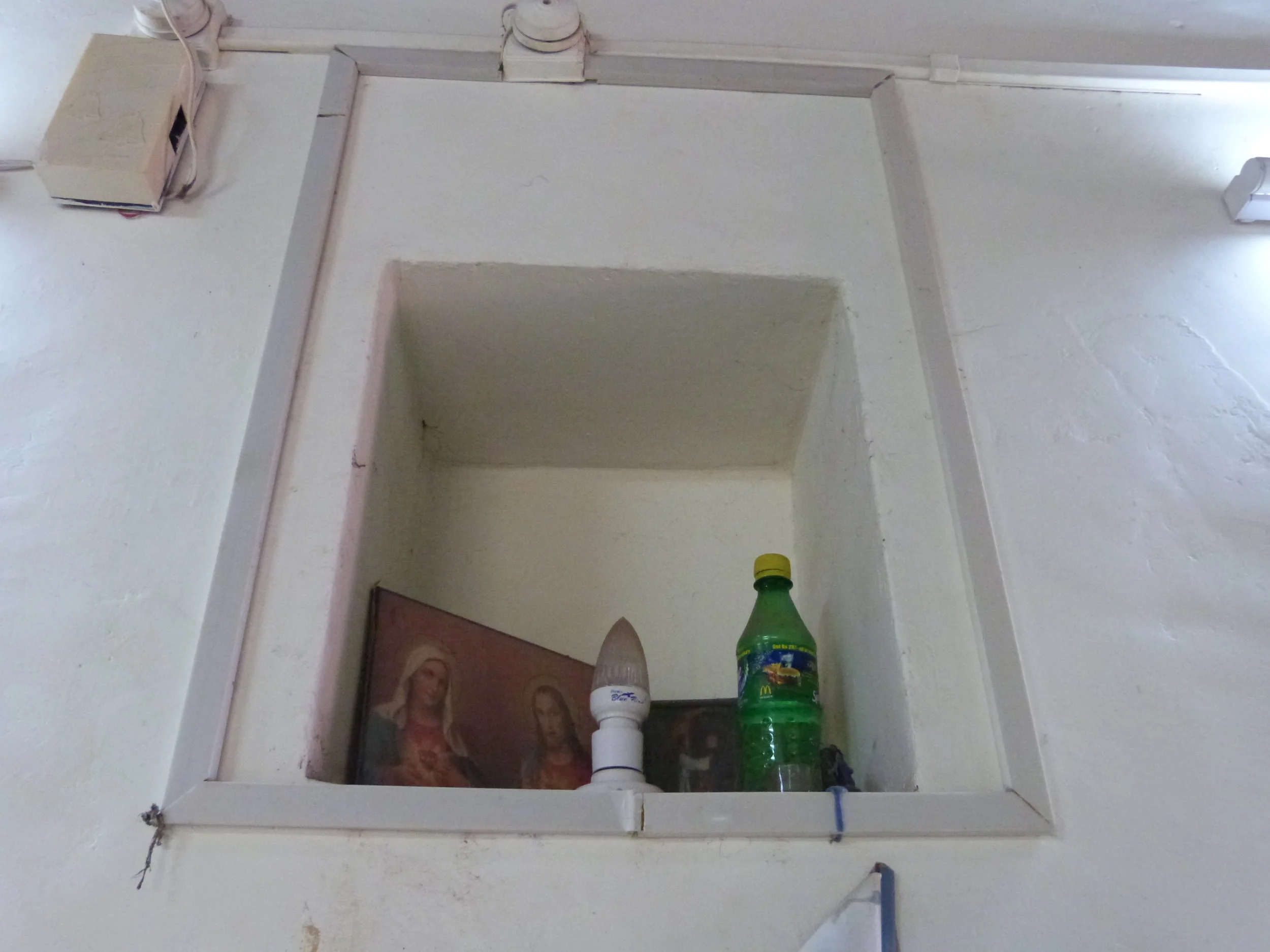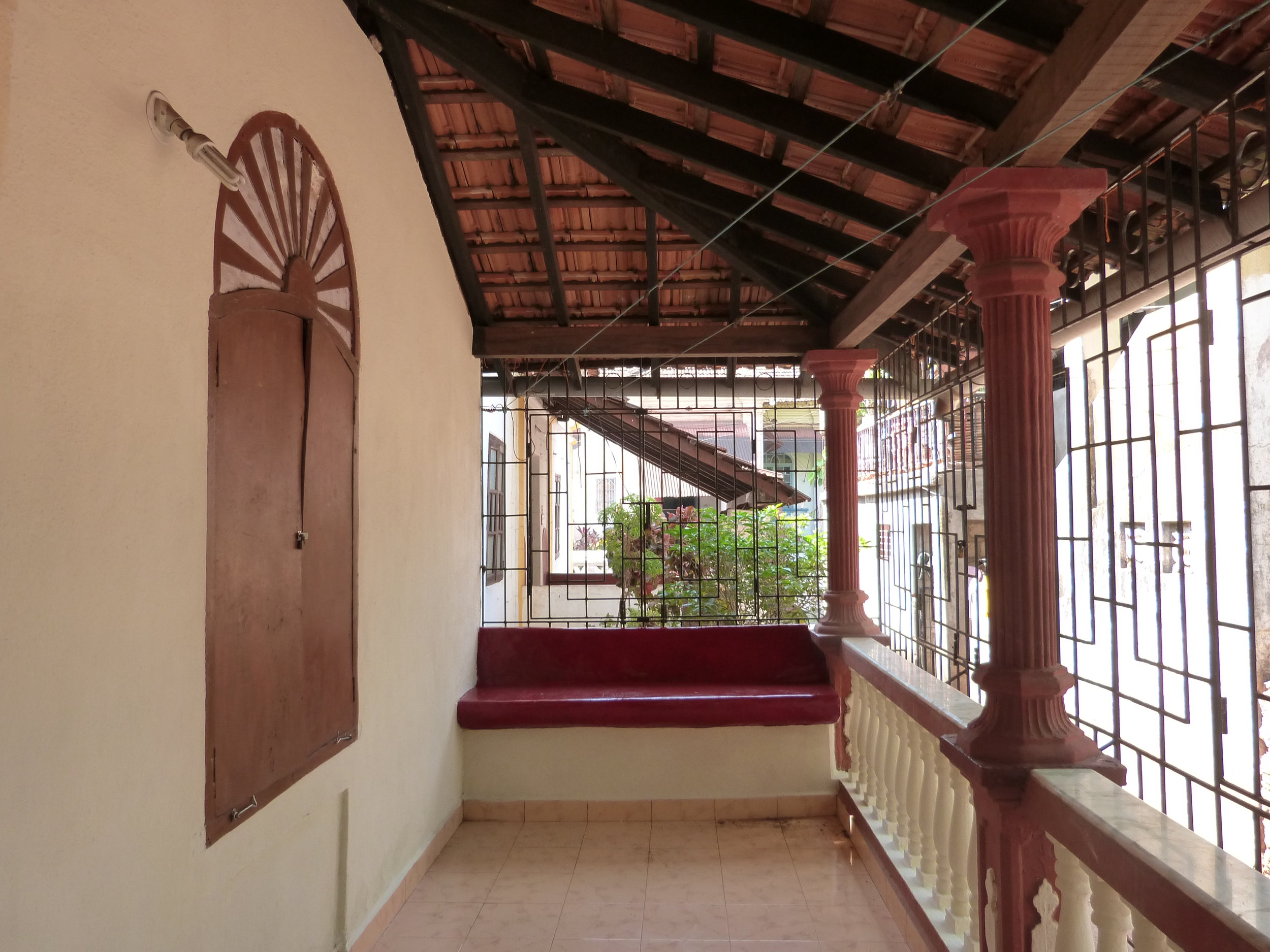By Selma Carvalho
I try to find traces of Souza in Goa. A spray of butterflies fly into my face as I creak open the right-hand side gate of the Igreja de Mae de Deus of Saligao, presumably Souza’s first encounter with the Christian imagery which his art would come to exemplify. The Church looks onto the endless green of paddy-fields, and unlike other churches in Goa, it isn’t elevated on a hillock.
There is an unearthly quiet, dispelled occasionally by the kick-start of a parked motor-bike or the cries of a persistent bulbul. The earth is wet with rain from the night before; a few red, yellow and decaying brown leaves lie shrivelled on the ground. Two cream-coloured plagues are embossed into the wall which encircles the church; one dedicated to John Baptist Pinto, born 1891, died 1973, 'sadly missed by his wife and children', the other to Isabel D’ Souza, born 1892, died 1967, wife of F J N D D’Souza.
In the small country church-yards and cemeteries of Goa, large tales are told. The Church is the sobriety of the Catholic Goan; its Baroque (or is Saligao’s church, Gothic) rotund naves singing the chorus to the hymns of our aspiration. In its custody are records, sheaf upon sheaf of paper validating the Catholic Goan's existence through baptism, marriage and death, and in the final resting place, the cemeteries, lie headstones with small lettering telling the world of our relationships and conquests: daughter of Dom Martins Piedade da Silva or wife of Rose Gama-Pinto rests in peace. Mud, bones and pedigree all mixed together. I am convinced that I will find traces of Souza in these frayed sheafs of paper, fortuitously copied and microfilmed by the Mormons of Utah.
Use forward controls to go to the next picture. This house in Saligao has been identified by historian Father Nascimento as Souza's maternal ancestral home where he spent much of his childhood.
The first sighting of Souza is on his baptismal record. He was born in Saligao on April 12, 1924. Like his cousins, born after him and as was the Goan tradition, he was probably birthed in his grandmother Leopoldinha's house, where in a darkened room, a four-poster bed groaned with the misery of his mother’s birth pangs.
He was baptised as Francisco Victor Newton de Souza at the Saligao Church less than a month later, on 8th May, 1924. His father’s name is recorded as Josi Victor Anicetado Piedade de Souza and his mother’s name as Lilia-Maria Cecilia Autunes. The name Newton doesn’t appear on the record as his father’s name but Souza advocate Ed Mullins, has stated that Newton was his father Josi's name on account of him having had an English God- father. On Josi's marriage certificate, Newton appears as 'por outro nome', another name.
Souza’s own godparents were Vitore Antunes and Leopoldina Saldanha, his maternal grandmother. Fourteen months before Souza’s birth, his sister Zumira Blanche Antunes Newton de Souza was born on 29th December, 1922, named in part after her Godmother, Lilia’s sister, Blanche. It is here that I first encounter Souza's father Josi, using Newton de Souza as part of the family name.
The popular story runs that a bout of small pox nearly killed Souza in childhood. Having succeeded in propitiating just enough of St. Francis Xavier’s goodwill to save her child, his mother added the name Francis much later. That he suffered a terrible bout of small-pox, which left him physically and emotionally scared is without question. As an adult he would paint his self-portrait depicting these hollow, contentious pox-marks as stars on his face and small tiny arrows as crosses of affliction. However the name Francisco was already on his baptismal certificate just days after his birth. The name runs in the family. It comes from his paternal grandfather: Antonio Francisco de Souza. Souza would later bestow its female variation 'Francesca' on his second daughter with his long-time mistress, Lisolette de Kristian.
In his early painterly life, he would adopt the name Newton, signing his pictures as Newton, and be called Sunny by family. Only in 1942, would he adopt the family name Souza. Did Souza go to his grave believing the small-pox story or was it carefully constructed by him to create a sympathetic narrative? In all probability, his parents never intended for him to use Francisco as a name. It was not uncommon for Goan men of that generation to have a first name, often that of the grandfather, which was never used. Instead it was common practice to use second names or a combination of the first and second by hyphenating them. His was Victor, the only name he never used publicly. But Souza had known all along that his first name was Francis. In 1953, his marriage certificate (spouse: Maria Figueiredo) is registered in Paddington London, bearing his name exactly as it is on his baptismal record, Francisco V N Souza, and in an exhaustive 1994 interview with Srimati Lal, his mistress at the time, he firmly puts the apocryphal story to rest, admitting Francis is on his birth certificate. By then the romanticised version is so rooted in our popular imagination, that it receives little attention.
In fact, so enamoured are we by the image of a small, pox-ridden child desperately clinging to his mother, who propitiates Divine succour, that when he died, Christopher Wood wrote an eulogy in the Guardian repeating the story. Souza had indeed gone to his grave with the myth intact.
Saligao Church in Goa, where Souza was baptised. Photo courtesy of Selma Carvalho
Selma Carvalho is an independent researcher, widely published fiction writer and winner of the Leicester Writes Short Story Prize 2018. Her debut collection of short stories was longlisted for the prestigious SI Leeds Literary Prize 2018 UK. She is the author of three non-fiction books, including Baker Butcher Doctor Diplomat: Goan Pioneers of East Africa (2016). You can buy the book here.



